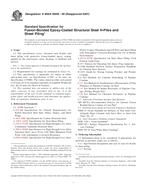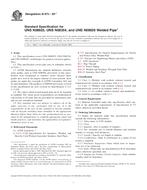1.1 This test method establishes requirements and laboratory procedures for performing direct shear strength tests on rock specimens under a constant normal load. It includes procedures for both intact rock strength and sliding friction tests, which can be performed on specimens that are homogeneous, or have planes of weakness, including natural or artificial discontinuities. Examples of an artificial discontinuity include a rock-concrete interface or a lift line from a concrete pour. Discontinuities may be open, partially or completely healed or filled (that is, clay fillings and gouge). Only one discontinuity per specimen can be tested. The test is usually conducted in the undrained state with an applied constant normal load. However, a clean, open discontinuity may be free draining, and, therefore, a test on a clean, open discontinuity could be considered a drained test. During the test, shear strength is determined at various applied stresses normal to the sheared plane and at various shear displacements. Relationships derived from the test data include shear strength versus normal stress and shear stress versus shear displacement (shear stiffness).
Note 1: The term “normal force” is used in the title instead of normal stress because of the indefinable area of contact and the minimal relative displacement between upper and lower halves of the specimen during testing. The actual contact areas during testing change, but the actual total contact surface is unmeasurable. Therefore nominal area is used for loading purposes and calculations.
Product Details
- Published:
- 12/01/2016
- Number of Pages:
- 9
- File Size:
- 1 file , 320 KB
- Redline File Size:
- 2 files , 810 KB


